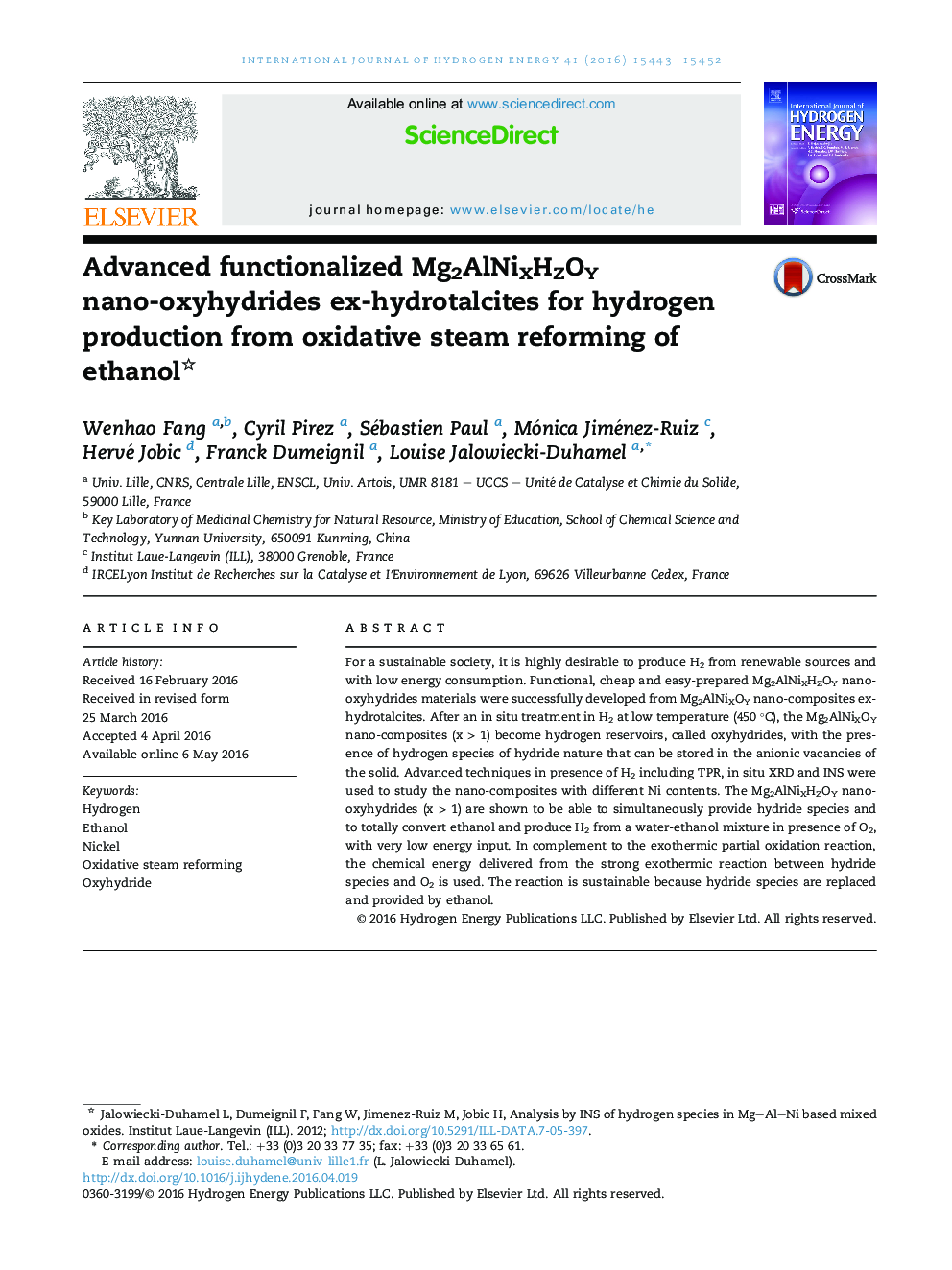| Article ID | Journal | Published Year | Pages | File Type |
|---|---|---|---|---|
| 1270424 | International Journal of Hydrogen Energy | 2016 | 10 Pages |
•Co-precipitation method allows obtaining well-dispersed NiXMg2AlOY nano-composite.•Treatment in H2 at 450 °C leads to nano-oxyhydride.•Coupling OSR and nano-oxyhydride is low-energy-consumption and sustainable process.•Total conversion of ethanol and 45 mol.% H2 formation is achieved at low temperature.•Active site involves anionic vacancies and cations in close interactions.
For a sustainable society, it is highly desirable to produce H2 from renewable sources and with low energy consumption. Functional, cheap and easy-prepared Mg2AlNiXHZOY nano-oxyhydrides materials were successfully developed from Mg2AlNiXOY nano-composites ex-hydrotalcites. After an in situ treatment in H2 at low temperature (450 °C), the Mg2AlNiXOY nano-composites (x > 1) become hydrogen reservoirs, called oxyhydrides, with the presence of hydrogen species of hydride nature that can be stored in the anionic vacancies of the solid. Advanced techniques in presence of H2 including TPR, in situ XRD and INS were used to study the nano-composites with different Ni contents. The Mg2AlNiXHZOY nano-oxyhydrides (x > 1) are shown to be able to simultaneously provide hydride species and to totally convert ethanol and produce H2 from a water-ethanol mixture in presence of O2, with very low energy input. In complement to the exothermic partial oxidation reaction, the chemical energy delivered from the strong exothermic reaction between hydride species and O2 is used. The reaction is sustainable because hydride species are replaced and provided by ethanol.
